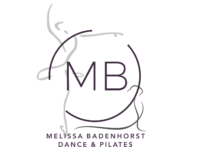Many students ask me which individual Pilates exercises are “the best” to improve their dance technique. I love to hear students wanting to push themselves to improve, so this is a great question. Here is what I tell them…
There is no simple quick fix answer to give. Pilates is a holistic system. By performing only certain isolated exercises you don’t reap the full-body benefit of a properly structured Pilates class. Unlike conventional gym routines which may compartmentalise body parts (eg. “Leg day”/ “Arm day”), a Pilates class should focus on the entire body in each session. The intensity of each Pilates class progresses over time. Systems like the BASI Block® system ensure that each part of the body is addressed in a progressive structure to benefit individuals according to their own abilities and personal goals.
What attracted me to Pilates as a dancer?
Dancers are driven. They constantly strive for perfection. They believe that a movement is never mastered. This mindset fits well with the Pilates approach. We want to get the best out of our bodies. This requires a mind shift away from the conventional unfocused “JUST DO IT” approach to a more conscious, intentional control of mind-body coordination.
Mastering movement takes time and focus. Each exercise develops to another “level” which requires more strength and control. For example, the exercise called “Rolling like a ball” progresses to “Open leg rocker”. The “basic back extension” ultimately builds up to “Swan dive”. Pilates is a dynamic, progressive and challenging exercise system. It’s not about just doing a movement but about recruiting the correct muscles to perform the exercise as efficiently as possible. This fits perfectly with dancing. Dancers seek perfection; there is always room for improvement. Pilates is one of the best ways to improve your dancing.
Where to start?
There are many sport specific Pilates classes, ballet included. In my opinion starting with a basic “repertoire class” will benefit everybody. By working through the classic Pilates repertoire even the most seasoned dancer or athlete can identify negative movement patterns, and enhance his/her sport. Specificity can come later once you have the basics down.
Benefits of combining Pilates and Ballet:
- This combination is not a new concept. Joseph Pilates (the founder of Pilates) worked with famous choreographers like George Balanchine (New York City Ballet) and Martha Graham (Martha Graham Center of Contemporary Dance) to transform the bodies of professional dancers.
- Ballet requires good body strength. Co-ordination of some balletic movements may seem challenging to the adult at first. However Pilates strengthens the core which in turn improves control, stability and coordination of movements.
- I highly recommend Adult ballet students just starting out to complement their training with regular Pilates classes to gain the particular strength needed. Combining these two will fast-track your ballet progress and significantly reduce the chances of injuries. In my teaching experience I have found that my dancers can now control and sustain ballet movements more gracefully and with greater ease. It’s no wonder that many professional Ballet Companies have had in-house Pilates trainers for decades.
- Pilates focuses on the stabilizer muscles which help to sculpt long and lean muscles by utilising isometric contractions. This results in a strong and toned “Ballet-ready” body.
Visit our online studio at pilatesanddance.com for tailored Pilates and Ballet workouts.

Melissa is a registered Dance and Pilates instructor with 21 years teaching experience.

